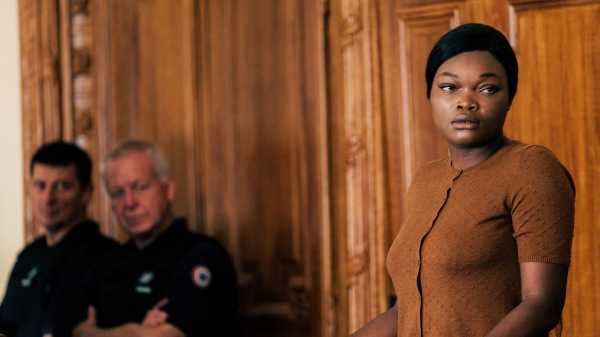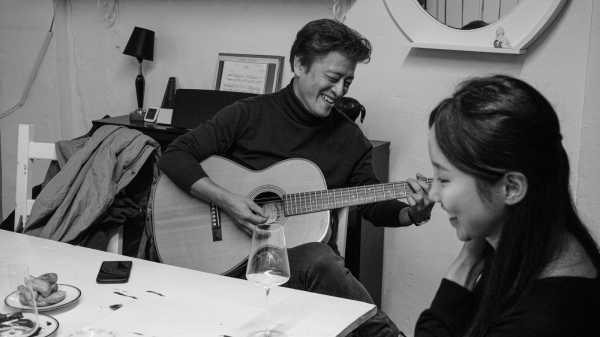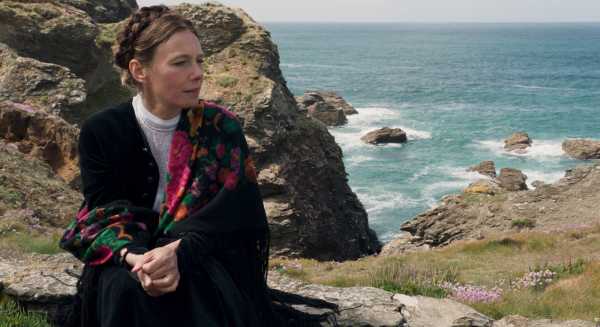 />
/>
The speed of communication has put the New York Film Festival, the sixtieth edition of which runs from September 30th to October 16th, in an odd position. This New York institution, which made its début in 1963, was founded as a so-called festival of festivals; unlike Cannes, Venice, and Berlin, it didn’t specialize in world premières but, rather, served as a curated anthology of films that premièred at other festivals. From the start, good reviews and buzz from New York Film Festival screenings have often led to films being picked up for American distribution. But, now, word gets around quickly—reviews and reports of films from those European festivals, as well as from Toronto, Telluride, and others from around the world, have become common coin in the American film press and are widely available online. Now many—even most—of the films in New York’s main slate will already have distribution in place and will often piggyback on festival ballyhoo into release just days or weeks after its New York Film Festival screenings. It’s not a bad thing, but it reverses the original equation: instead of serving as a showcase, the N.Y.F.F. becomes a part of the advertising for an already planned release. What used to be an urgent place to see movies for fear that they might not be seen elsewhere anytime soon now often feels like a mere preview.
Of course, the shift in the business doesn’t make the movies themselves any less exciting, but it changes critical priorities. In this year’s festival press screenings, I’ve seen wonderful films coming out so soon (such as Hong Sangsoo’s “The Novelist’s Film”) that I’ll write about them then; others, in similarly near-at-hand release, are lower priorities for festival screenings. The priorities are for a handful of extraordinary movies due to come out later this year, some time next year, or at no time yet determined. Among the rest, I discussed “Descendant” (October 1st-2nd and 6th) when it played at Sundance, and the short films “The Potemkinists” (October 1st) and “Lesser Choices” (October 8th-9th) in the magazine. Also, one of the greatest films in this year’s festival—one that also played in the 1973 edition—is Jean Eustache’s “The Mother and the Whore,” coming October 5th-6th in a new, long-awaited restoration, and in need of separate, extended consideration. What remains to enthuse about, from the festival’s first week, is a trio of films that share provocative approaches to the cinematic representation of facts—three radical varieties of epistemic cinema.
“Saint Omer”
In criminal trials in France, the accused are required to face direct questioning from judges and prosecutors. As a result, French trials are less like American-style chess games and more like horrifying and brutally thrilling bullfights. I’ve long been recommending Raymond Depardon’s documentary “Tenth District Court” to show how the system works, but I’ve never seen a great French courtroom drama until now, with Alice Diop’s first fiction feature, “Saint Omer” (October 3rd-4th and 9th). It introduces its legal battle with roundabout, Henry James-ian inspiration. Diop’s protagonist, Rama (Kayije Kagame), a young Black woman, is a novelist and a literature professor who is currently teaching a course on Marguerite Duras’s transformations of real-life material—and who is herself attempting such a transformation. In the town of the title, in the north of France, a Black woman named Laurence Coly (Guslagie Malanda), born in Senegal, is on trial for killing her fifteen-month-old daughter, and Rama travels there to attend the trial in order to write a book about it, which she wants to call “Medea Shipwrecked.” The interrogations of Laurence delve deep into her childhood, her family, her life in Paris, her academic ambitions, her relationship with the father of her child (an older and married white man), and her own epistemic relationship to the killing (including in relation to her Senegalese heritage). Meanwhile, Rama is pregnant (her partner is a white man), she has troubling memories of her own family life, and the trial spotlights her own intermingled cultural, intimate, and familial conflicts.
The movie is based on the real-life trial, in 2016, of Fabienne Kabou, in Saint-Omer, which Diop attended; the script, by Diop, Amrita David, and Marie NDiaye, reconstructs the case with an expansive, urgent patience. Working with the cinematographer Claire Mathon, Diop films the courtroom interrogations with an analytical precision that draws on her documentary experience, with alertness to gestures, glances, and turns of phrase on which vast shifts in emotion and conscience pivot. The prosecutorial wrangling isn’t reduced to sound bites of plot points but is developed as mighty dialogues and soliloquies that fill the courtroom and the frame with tragic fury—which Malanda unleashes, with fierce and plainspoken determination, in long and portrait-like takes that threaten to rend the screen with the intense pressure that they concentrate. Yet the emotional power of these high-stakes orations also challenges the dualism of guilt and innocence, exposing the gap between legal and moral responsibility, between factual and psychological reconstruction, between political ideals and individual identities.

The actor Kwon Haehyo plays the guitar in a scene from Hong Sangsoo’s film “Walk Up.”Photograph courtesy The Cinema Guild“Walk Up”
The prolific South Korean filmmaker Hong Sangsoo has two movies in this year’s festival (the other, “The Novelist’s Film,” opens in theatres October 28th). He’s an independent filmmaker of an absolute sort—with these two films, he’s the writer, director, cinematographer, editor, and creator of the (scant but significant) musical score, and, with the resulting artistic freedom, he creates not just a personalized range of characters and themes but a narrative method all his own. It happens to resemble the imaginative logic of the venerable children’s book “If You Give a Mouse a Cookie”; his films are cinematic conditionals, the realizations of hypotheticals, which he often pursues down alternative paths and diverging roads in the same narrative journey. In “Walk Up” (October 2nd and 8th), Hong pursues these dramatic linkages to subtle but nonetheless astounding extremes, turning a neat and narrow building (yes, a walkup) into a dramatic laboratory to find out what would happen if an acclaimed middle-aged filmmaker named Byungsoo (Kwon Haehyo) brings his grown daughter, Jeongsu (Park Miso), an aspiring interior designer, to meet his longtime friend Ms. Kim (Lee Hyeyoung), an accomplished interior designer who lives and works there, in quest of advice or even mentorship.
The building proves to be a hive of personal and professional passions. Father and daughter end up living there, albeit not at the same time. Leaps in the action suggest both vast off-camera changes in the characters’ lives and the flipping of switches in the story’s narrative track, and Byungsoo’s encounters with other neighbors—including a restaurateur and a real-estate agent—send the drama lurching into the odd angles of its pinball pathways. Yet what matters above all is the force of individuality. The story’s skippings-ahead, doublings-back, ambiguities, surprises, and self-contradictions turn the building and the premise into a laboratory—for Hong’s distinctive, idiosyncratic characters. They all have temperaments, challenging one another with intrusive questions and expressing themselves assertively in memorably candid dialogue on intimate and grandiose subjects, as when Ms. Kim delivers a cautionary riff on the nature of artistic creation and when Byungsoo, decrying the constraining wastefulness of high-budget filmmaking, voices envy of painters who paint daily. Hong films these complex dialectical wrangles with extended takes, in incisive and dramatically charged angles, that, in the long reach of their stark authority, mesh with Byungsoo’s lament to embody a manifesto of sketch-like, hands-on spontaneity.

The French actor Nathalie Boutefeu sits seaside, in a scene from the film “A Couple.”Photograph courtesy Zipporah Films“A Couple”
The documentary filmmaker Frederick Wiseman builds this mid-length fiction feature (October 1st-2nd), a mere but busy sixty-three minutes long, on the basis of documents—the correspondence of Leo and Sophia Tolstoy as well as her diaries—which is a one-woman show featuring a vast, offscreen cast of characters. Nathalie Boutefeu plays Sophia, who is seen walking by day amid the natural splendors and architectural graces of the family’s waterfront villa and sitting alone indoors by night, writing by candlelight and lamplight, as she composes the story of her life with the great author, in the form of an open letter to history and a long-stifled reproach. The subtitle could be “It’s a Miserable Life.” Sophia, who married him at eighteen (he was thirty-four), was shocked when, on their wedding night, he gave her his diaries, in which he confessed to his libertine sexual life and to having fathered a child with a servant on his estate. She laments not her decades of sacrifices for him and what she considers her sole emotional and practical support of the family but his cruelty, indifference, selfishness, and ingratitude—the reduction of their partnership to her subjection. Wiseman, working with his longtime cinematographer John Davey, films with an ardent eye for Sophia’s natural surroundings and their venerable yet weather-worn architectural touches (such as stairways, benches, and balustrades) and emphasizes her connection to them in her seemingly choreographed walks and sculpted postures.
Wiseman, who lives in Paris, delivers something of a male artist’s universal confession. There’s no reason to think that he’s reproaching himself but, rather, reproaching European artistic culture at large—but, to do so, he also conveys the grand audacity of filming European artistic culture as such, in one mighty cinematic gulp. Perhaps, with Jean-Luc Godard’s recent death, I’ve got his films on my brain, but what “A Couple” most reminds me of, in style and tone, is Godard’s film “Nouvelle Vague” (which played at the N.Y.F.F. in 1990 but has never been released commercially here), in which a couple (Alain Delon and Domiziana Giordano) play out their power struggles, and the large-scale historical conflicts of money and art, on a sumptuous lakeside estate, in dialogue composed largely of literary quotations and references. Wiseman’s movie approaches such themes and tones with a documentarist’s concentrated focus on one person giving voice to her experience. Where Godard brings history’s voices to the fore through the iconographical composition of his highly symbolic characters, Wiseman restores the single voice of a single historical character and, in the process, renders her symbolic, emblematic, iconic. ♦
Sourse: newyorker.com






